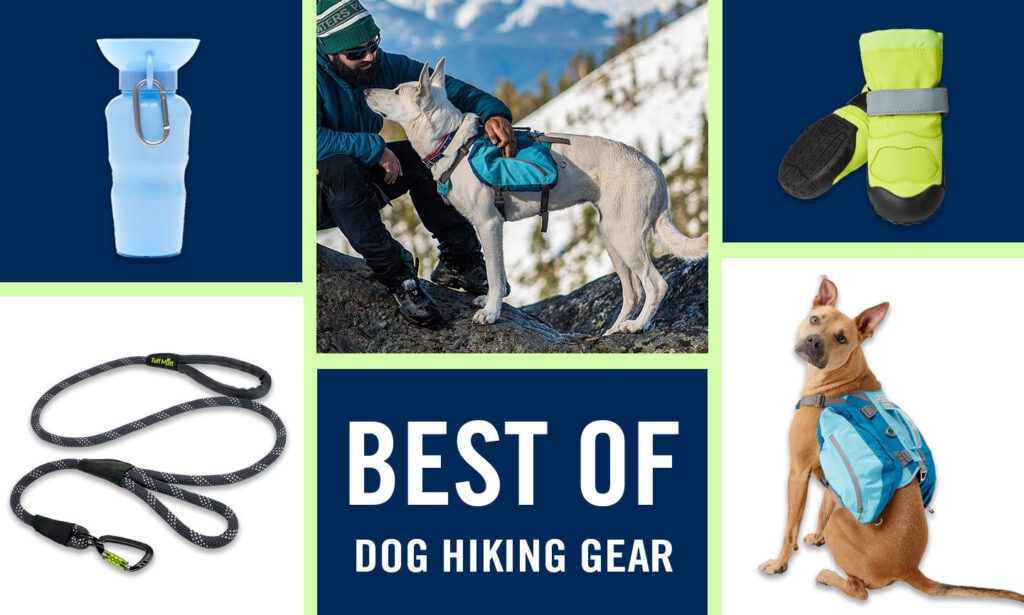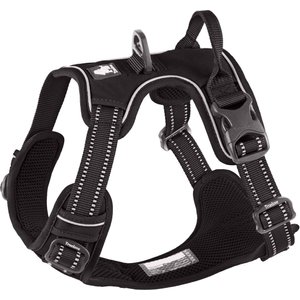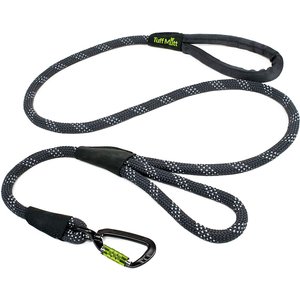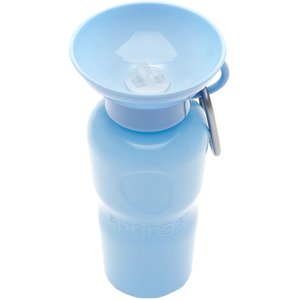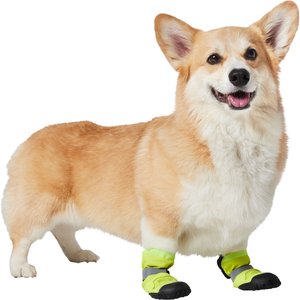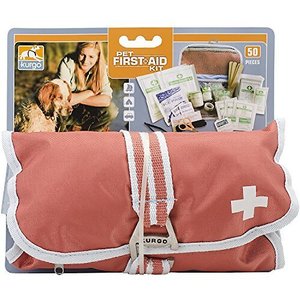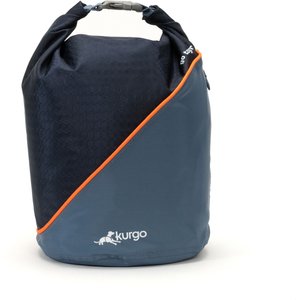Hiking with your dog is a great way to spend quality time together because it offers many benefits for you both. Not only is it a great cardiovascular and strength workout, but also a mentally enriching experience that gets both you and your pooch out of your normal routine and into the Great Outdoors and all of its beauty. Ready to hit the trail? With this comprehensive shopping guide, you’ll know exactly what to pack, and you’ll find the best dog hiking gear that other nature and dog lovers like you use.
- 1
- 2
- 3
-
4
$60 on ChewyFREE 1-3 day shipping
-
5
Best Dog Carrier Backpack for HikingK9 Sport Sack Air 2 Forward Facing Dog Carrier Backpack $75 on ChewyFREE 1-3 day shipping$75 on ChewyFREE 1-3 day shipping
How To Find the Best Dog Hiking Gear
Before you start shopping for dog hiking gear, there are a few things to consider to help you determine what you’ll need, including what’s a must versus a want. We spoke with Maria Christina Schultz, certified canine fitness trainer and owner of Maria Christina K9 Training, who regularly hikes with her Australian Shepherds, Bodie and Willow, for advice.
- The weather: Check the temp. Will it be hot? A cooling vest may be in order. And don’t just look up what the forecast is on the day you plan to hike, but also what may have occurred in the days prior. Rain can leave muddy and slick trails, as can melting snow, in which case dog boots may be needed. Seasonality comes into play too. Verify the local hunting seasons, and even if you’re hiking in a no-hunting zone, consider putting a brightly colored vest or jacket on your pup as an extra precaution, says Schultz.
- Your dog’s physical abilities: A dog’s age and breed don’t tell the full picture, says Schultz. Consider prior injuries, temperament and current fitness level to keep your dog out of harm’s way—and to make sure they actually enjoy themselves out there. What’s more, even athletic, well-conditioned dogs may have difficulty traversing trails with high elevation gains. A dog carrier backpack may help when your dog is unable to traverse the trail, or simply to give them a break from walking.
- Trail rules: Not only do you want to confirm the trail is dog-friendly, but you’ll also want to know if dogs are expected to be leashed.
- Length of hike: How long will you be out on the trail? This will help you determine what supplies you should bring, like food, water and bowls for each.
15 Best Dog Hiking Supplies
Below is the best dog hiking gear as tested and approved by Chewy customers. These best-selling, top-rated dog hiking supplies get two paws up from dog parents like you.
Best Dog Hiking Harness
-
One did fit the female the other one to small for the male, need to send back get bigger size
-
Comfortable leash
This harness, and leash are amazing to use. Dogs do not get any wear marks and the leash is comfortable on your hands when walking your dog.
-
Great harness
Harness is still going strong despite near daily use since I bought it a couple of years ago. Love that it has a latch on the back as well as one on the chest to dissuade pulling. Have used it for daily walks, hiking adventures, and even swimming. It washes well. The purple is really pretty and the color has held up. A great option for my pit mix, keeps any pressure off her neck and feels far more secure than using the collar as a leash point.
Best Dog Hiking Leash
-
Great leash
This is the only leash I will use, the locking clip keeps my dog safe, and the traffic handle it a nice feature too.
-
Great product design
The double handle design and durability. This is our 2nd time purchasing this product only because the old one was dirty and our dog chewed on it a bit.
-
Great leash, really sturdy
I have 2 Great Pyrenees dogs and these leashes are strong enough for 100 lb dog, no problem. Just wish they had padded handles.
Best Dog Hiking Collar
-
Visibility
This is a great collar. I’ve had a couple before and like them very much. I do like the 1 inch wide version but it’s a bit too big (long) for my dog while the 3/4 inch is barely large enough.
-
Personalized dog collar
This is the 5th I have gotten from Chewy. Appreciate that the personalization that is on the collar can't disconnect like a dog tag ID can. Really like the reflection on the middle of the collar.
-
Phone # collar
This collar has it all. It’s reflective and has my pup’s name and phone number embroidered on it. I like that there is one less tag jingling around her neck. It’s a nice quality with a substantial plastic clasp.
Best Dog Hiking Backpack
-
Fit and construction quality
Love it! Even fits my 160lb mastiff, which is quite a feat. It’s sturdy, good quality, and has great features!
-
Fits well
My 65 pound Old English Sheepdog realizes immediately that when I put this on her we are going for a hike. Four pockets is just right.
-
In With the New
The same backpack was worn out. I noticed how much easier the clips were on my arthritic hands to open and close.
Best Dog Carrier Backpack for Hiking
-
Amazing
Use this to go to the park with my dog on motorcycle. Super secure safe and he loves it.! 10/10. Upgraded him with the booster seat of foam as well.
-
Extremely well made
My dog fit perfectly and when we went for a walk, he seemed relaxed and enjoyed the view. Looking forward to using it when we camp.
-
Great backpack
My son wanted to be able to take his pug all around with him, including bike rides. I feel like he is very secure in this backpack. Great quality and the pug loves it
Best Collapsible Bowl
-
Durability
I have two of these. I travel a lot and this has worked out great while getting food/ water to my pup. I haven’t exactly been easy on them, and they’re still like new.
-
Compact & Easy for Travel
Easy to use and pack up for traveling, rather than have to take my dog's heavy normal bowls everywhere. I keep them in my car so we have water bowls when we hike, travel, or go to the dog park. Very easy to use and well-priced.
-
It's portable
Needed a bowl(s) for trips to the park or for vacation trips. Compact, has a deep enough set of bowls and it folds into itself for easy packing.
Best Dog Water Bottle
-
The color
This drinking container is amazing You can squeeze it so the water can come out and then the water can go back in the container . Great when you in the car and can’t stop to empty the remaining water .
-
Great travel water bottle
The great thing about this bottle is that you don't have to dispose of unused water when traveling beause the water that is not lapped up can be sucked back into the bottle.
-
Love that someone came up with this idea!
Bought two, one for BIG dog, but bowl part needs to be bigger for her huge tongue. Would buy another one with a bigger bowl.
Best Dog Booties for Hiking
-
Great protection
This boot helped protect our dogs paw in the rain, snow and on bare pavement. Helped his toe pad heal and walk better.
-
great dane approved!
it’s so hard to find proper gear for my great dane without costing an arm and a leg. these fit my 120lb girl perfectly. the double reinforced elastic and bungee provide a secure fit while she gallops through the snow!!
-
Boots that fit
These boots are great to help my puppy when salt is poured on snow and hot pavement. Took a little while for him to get used to it but once he did he walks great. Great fit!
Best Dog First Aid Kit for Hiking
-
Great Buy!!!!!!!
The only thing I had to add was a tick removal tool and this kit is complete. We have a travel cat and wanted to make sure we were ready for any emergencies on the trail. This kit does the trick and then some. Price was good, too.
-
Good First Aid Kit
This is a good first aid kit. It comes with most of everything you may need, plus has some space for extras you may want to add (I added Benadryl and Neosporin to the pack), and it doesn’t take up a lot of space so you can store it pretty much anywhere.
-
Perfect For Travel
This is a perfect first aid kit for traveling with our puppy! Luckily we haven't had to use it yet, but it seems to have plenty of helpful things in it!
Best Dog Cooling Vest
-
Design of the sunshirt
Really fits well to protect my puppy when in the sun on our boat..I bought 3..in different sizes..he's going to be
-
Great cooling vest
I have tried a few different brands and this one finally was a fit. I have a rescue (mixed breeds) and he had been difficult fitting.
-
Good
My Roxie girl, is a GSD/Lab mix. She has pretty thick fur, and if you're in the Valley around Boise in Idaho, we've had temps of 100 degrees F, or more everyday for the last 3+ weeks with no end in sight. My girl loves to be outside! I used the coldest water to wet this jacket and it seems to keep her fairly cool. I just have to reset it a couple of times throughout the day. It's definitely worth the money.
Best Dog Poop Bags for Hiking
-
The quality of the bags is amazing
The quality of the bags is amazing. They’re nice and durable but yet they’re long enough to tie at the end. I’ve been buying these bagsfor quite some time now and I’m absolutely in love with them.
-
Sturdy
This is a good, sturdy bag. There's even a sticker to let you know when the roll is down to three bags, which is think is neat.
-
Sturdy, nicely scented bags!
I purchased a smaller box of these during the holidays. I really enjoy the lavender scent even after picking up a dog bomb in the yard. They are leak proof and don’t tear when ripping th perforated edges. That is why I stocked up buying this large amount! Will buy again.
Best Dog Treat for Hiking
-
Perfect Treat
I use these as a reward for our 3 dogs going to their kennels at bedtime. They look forward to this and will let me know if I forget!
-
So Tasty, yum!!
My dog is allergic to most foods except for beef and fish. He absolutely loves these and will always dance for this treat!!
Best Dog Food Storage Container
-
Makes camping a whole lot easier
Holds plenty of food, easily flipped inside out for cleaning, even has a little pocket at the bottom for foldable dog bowls.
-
Love my travel bags.
Wonderful and so useful. I purchased several for our travels, one for dry food, one for cans and one for my dogs medicine.
-
Fits a lot of food!
Love this option for a reusable dog food container -- it fits loads of food and is easy to open/close/access for scooping. Much more convenient than reusable bags meant for human food. Would highly recommend this as a solution for travel & when bringing the pup to the dogsitter.
Best Dog Sunscreen
-
Sun Screen For My Rescue!
My Malty has vulnerable pink underbelly areas, and this product seemed like a good idea. Janis doesn't even mind when I apply it!
-
Does well
The spray goes on well. Doesn't smell strong or bad. We use a cloth to apply to face, our dog hasn't been burned or turned red in the sun.
-
At ease spray
I feel comfortable knowing he gets by now with uv protection and I spray it all over him even his pads,I put on a long with mushers secret on his pads for the hottest day for his pads with vapor rub for if it could be extra protection for grounds being hottest by healing even if it's not rough but to prevent with the wax being melt moisturizer with protection being thick though it's thin and waxy on my hands his pads but I give him short walks anyway but when it's sneaky getting to be hottest not knowing it will when it's a long walk I still feel good that he's covered!!!
Best Hands-Free Dog Leash
-
Great for walking 2 dogs
I walk my 2 100 lb dogs so much more easily now with these leashes! The sliding feature is helpful so they get less tangled, also you can unclip and re-clip again at the belt. Great so if I need to stop and pick up a poop I have my hands free.
-
Bungee leash
I got the hands free leash and I walk 2 dogs with it, gives them about 8 ft of leash to run around, if you have to pull them back the rings are spaced perfectly, only time that stunk was when I fell and the dogs were dragging meit's really great once you get used to it.
-
Full-time dog walker approved!
I’m a manager of a dog walking company, and we provide these leashes to all of our staff! I even got some for my pups at home. Best hands free leash- never had any problems and they last for years. :)
How We Chose These Products
Hiking with your dog is all about experiencing what nature has to offer together, and the right dog hiking gear can help get you on the trails faster and with more confidence. That’s why we consulted our experts, who spend tons of time with their own pets outdoors, to understand what types of products are needed for hiking with dogs. Then, we combed through Chewy’s best-selling products to bring you only those that have a minimum rating of 4 stars from customers. This way, you can be sure you’re getting dog hiking gear that is pet-tested and pet parent–approved.
What Do I Need To Go Hiking With a Dog?
Now that you know what the best gear is for your next hiking trip with your dog, let’s walk through the different types of dog gear in more detail to better understand how they can improve safety and comfort, and simply make the experience more enriching and enjoyable for you both.
Dog Harness
Always ensure your dog has a well-fitted harness that doesn’t inhibit their natural gait or range of motion, says Schultz. Be mindful of harnesses with a horizontal strap in front that could inhibit a dog’s shoulder extension, which could prove tricky while maneuvering across terrain on hikes, she adds. A harness with a handle on the back is a nice option if you think you may need to hoist your dog over or up something on the trail, as well.
Portable Water Bowl or Bottle
Hydration for you and your dog throughout your hike is essential, so products that provide easy access to drinking water are a must. “A general rule of thumb for dogs—without strenuous activity in mind—is to drink approximately 1 oz. of water per pound of body weight per day,” says Maggie Peikon, manager of communications at American Hiking Society, who hikes weekly with her dog, Finley, a 10-year-old Standard Schnauzer. “With hiking in mind, you’ll want to be sure you have more than enough water to accommodate your dog’s needs during a physically demanding outing.” A collapsible dog bowl is a great space-saving solution, and water bottles with good leak protection or those with a spout for easy drinking are smart choices as well.
Leash
Whether you opt for a longer lead to give your dog a little sense of freedom or the trail rules or environment necessitate a short leash, choosing a style that is well-made and sturdy is important when hiking with your dog. “A leash with a strong clip is always a good idea,” says Peikon. “You never know what you may encounter on the trail, and ensuring your dog’s safety is essential.” For hikes and other outdoor activities, some pet parents opt for a hands-free leash that wraps around their waist or chest to keep their own hands free, but if your dog tends to pull on a leash this may not be the best choice, she says.
Food and Snacks
Water. Check. Food. Check. For longer hikes or if you know your dog may need a little savory encouragement, packing a small baggie with kibble or some treat isn’t a bad idea. You know how the hunger pangs thwart even the best-laid plans, so don’t get caught out midway through a hike with a grumbling stomach—and that goes for either of you. A small reusable baggie or a travel dog food container should do the trick.
Poop Bags
“Always remember to leave no trace,” says Peikon, referring to the initiative to keep nature in its, well, natural state. That includes granola bar wrappers from you and poop and waste-filled bags from your pup. In addition to making sure you have plenty of poop bags, consider adding something to your pack to carry the used waste bags out of the park, says Peikon.
“Not all trails will have garbage bins, so having a way to carry out your dog’s waste, such as a carabiner clip or this pouch bag from KONG, is essential—leaving it on the side of the trail is not an option,” she says. (You never want to leave waste on the ground, as that could spread bacteria or disease; not to mention, it’s unpleasant for fellow hikers.)
Other Dog Hiking Gear To Consider
These are a few other nice-to-have items to consider adding to your cart before checkout:
- Dog bug spray: A mosquito repellent may come in handy in dense, or humid, environments. This one from Vet’s Best comes highly rated by Chewy customers.
- GPS tracker: If you’re interested in keeping an eye on your dog’s movement for fitness purposes or mileage on the trail, a GPS activity tracker could be a handy tool. Just don’t rely on these gadgets instead of recall cues when you need your dog to return to you, as they need cellphone service to work—a limited commodity while hiking, says Schultz.
- Tent: A tent is a must if you’re planning to hike to a campsite for an overnight in the backcountry. Bring a foldable dog mat or thin dog bed for your dog to sleep on alongside your sleeping bag inside the tent with you, says Schultz. This travel dog bed from Frisco by Chewy is a good option.
- Light-up collar: In low-lit areas, during dusk or at night, an easy-on, easy-off light-up collar is a great way to keep your pup in sight. This rechargeable LED collar from Blazin is one option to try.
Benefits of Hiking With Your Dog
In addition to the obvious physical benefits, hiking with your dog also has mental health benefits.
“When we travel [or] go someplace new, we feel refreshed and invigorated when we get back,” says Schultz. The same is true for our dogs. “For a dog, who typically only gets to walk around their neighborhood and smell the same mailboxes every day, it just changes things up for them,” she says.
Plus, it’s a chance to strengthen your relationship, says Peikon. “Hiking provides social benefits, both for you and your pet, to bond through quality time together and for your pet to experience social interactions with other hikers and hiking dogs,” she says.
Tips for Hiking With Dogs
- Start small. “The best way to start hiking with your dog is simply to head out and go,” says Peikon. But you want to “start small, start local and see how the experience goes.” The life stage of your dog can impact the distance, terrain and elevation they can safely hike, as well, says Schultz. Puppies and seniors shouldn’t be on strenuous or lengthy trails.
- Double-check that a trail is dog-friendly. Ask local guides and browse forums for images and insider info, says Schultz. A trail may be labeled dog-friendly because it allows dogs, but that doesn’t necessarily mean the terrain is suitable for dogs (think: extreme inclines, steep drop-offs or very rocky trails). While you’re researching, “ensure that you know the leash laws in the area, and adhere to them,” adds Peikon. “This is for your safety, your dog’s safety, the safety of other hikers and their pets, as well as the environment you’re hiking and the wildlife that call it home.”
- Always be prepared. Have a plan for the unexpected, such as if your dog is injured. Pack a portable first aid kit, and “always have a plan for how to carry your dog off a trail during a hike,” says Schultz. She recommends having (and practicing with) a dog rescue harness on hand, which has a sling-like design to hold a dog’s weight with straps to carry the dog like a backpack. You may also want to pack some extra kibble for them and a snack for you to maintain energy as the miles increase. Plus, “you have to think about the weather where you’re hiking,” says Schultz. “Is your dog going to need a jacket or a coat? I’m also a big fan of cooling jackets or a bandana [for hot days].”
Have more hiking questions? Check out this ultimate guide to hiking with dogs, which covers everything from finding a dog-friendly trail to safety tips to trail etiquette.
Hiking With Dogs FAQs
Q: Is it OK to take a dog hiking?
A: Yes, but there are some caveats. Before heading out, make sure your dog is physically capable and up for a hike (get a vet’s opinion if you have questions), and build up their cardiovascular stamina before venturing out for a lengthy trail, says Schultz. And don’t forget about practical factors like checking for inclement weather, dog-friendliness of a trail, and even local hunting or wildlife seasons, she adds. Everything look good? Happy trailing!
Q: How many miles can you hike with a dog?
A: There’s no hard-and-fast rule for how many miles your dog can safely hike. It really comes down to the physical conditioning of your dog, says Schultz. How conditioned (think: endurance, strength, orthopedic health, their paw pads, etc.) a dog is will help determine the distance they can travel. But climate, terrain and elevation all make a difference, too, she says. And when in doubt, “less is always better until you build up their stamina,” she says.
Q: Do dogs like going on hikes?
A: Not all dogs will enjoy hiking, and some may start out strong but have their limits. The key to knowing where your dog falls is being attuned to their stress signals, says Schultz. Typical signs include yawning, trembling, lip licking and not wanting to move. Your dog may stop, sit or even lie down on the trail if they don’t want to continue on, she says. The bottom line: If hiking isn’t your dog’s thing, never force them.
Q: How to carry your dog on a hike?
A: If you’re interested in carrying your dog during a hike in a backpack, for example, you should make a few key considerations, says Schultz. Are you physically able to carry your dog? Larger breeds will certainly be more difficult to carry for longer periods, not to mention they will likely be quite uncomfortable, she says. “Dogs’ bodies are designed to be horizontal,” she says. “We’re asking them to be vertical in a backpack.” So, you’d want your dog to be able to comfortably sit in a carrier or backpack that has strong support and padding. If you have a smaller dog who can move around comfortably in a well-designed, joint-friendly backpack, you can test it out on shorter distances at first, and go from there, says Schultz. Otherwise, stick to what distance they can cover on foot or leave them at home.
Ready to hit the trails with your pup? Feel prepped and ready for anything with our “best of” list for all your dog hiking gear needs, so you both have a safe and enjoyable time in the Great Outdoors. Looking for your next adventure? Check off some epic destinations from these best dog-friendly hikes in all 50 states.
Expert input provided by Maria Christina Schultz, CCFT, owner of Maria Christina K9 Training based in central Virginia; and Maggie Peikon, manager of communications at American Hiking Society, based in Moab, Utah.
More outdoor adventure advice:
Share:
